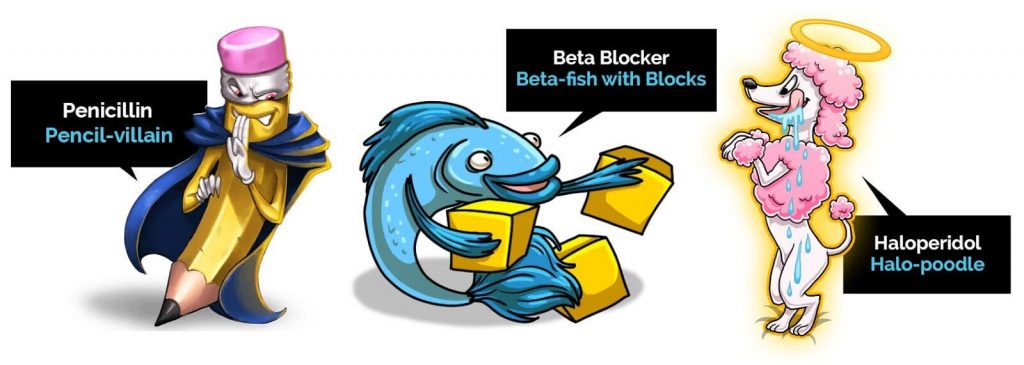Mnemonics for nursing are great study aids to use throughout school. From rhymes to acronyms, mnemonics are a fun way to learn and recall information every nurse needs to know. Learn how nursing mnemonics can help and how to use them.
How Nursing Mnemonics Help Nursing Students

What are mnemonics exactly? Mnemonics scientifically work to help learners of all ages recall large pieces of information through memory devices. Oftentimes, they’re an acronym, but mnemonics come in all shapes and sizes. They can be rhythmic, artistic, chunked with other information, or simply an association.
For nurses, learning mnemonics in nursing school is extremely helpful. They can be used to study for tests, remember processes, and prepare for the NCLEX. With lots to learn in nursing school, nursing mnemonics make it easier and faster to learn the most important information you need to know.
Many nurses remember and use the following five memorable mnemonics for nursing students throughout their careers.
1. ADPIE
Would you like A Delicious Pie? Chances are you’ve already heard of this mnemonic used in nursing! You’ll follow the nursing process below throughout your medical career.
- Assessment: Assess your patient.
- Diagnosis: Diagnose what’s wrong with the patient.
- Planning: Make a plan to address the patient’s needs.
- Implementation: Put your care plan into action.
- Evaluation: Evaluate the effectiveness of your plan and make adjustments if necessary.
2. SAMPLE
Don’t forget how to perform a patient’s health assessment with this SAMPLE of mnemonics for nursing!
- Symptoms: What is your patient experiencing?
- Allergies: Does your patient have any allergies?
- Medications: What medications is your patient currently taking?
- Past medical history: What is your patient’s and their family’s medical history?
- Last oral intake: Did your patient recently eat or drink? What are their eating habits?
- Events leading up to injury: What happened before your patient started experiencing their symptoms?
3. RICE
Remember how to treat sprains, strains, and soft tissue injuries with the following acronym.
- Rest: Patients should rest as much as possible after an injury.
- Ice: Within the first two days, patients should apply an ice pack for at least ten minutes every two hours.
- Compression: An injury can be compressed for up to three days to reduce swelling.
- Elevation: Injuries can be elevated at the heart level to aid circulation.
4. BUBBLE
BUBBLE is a postpartum nursing assessment used to identify potential complications in an individual who has just given birth.
- Breasts: Assess for signs of infection.
- Uterus: Check if the uterus is firm and contracting.
- Bladder: if your patient has difficulty voiding, they could have a distended bladder.
- Bowels: Your patient may need a stool softener if they’re in pain.
- Lochia: Assess lochia for the amount, color, and odor.
- Episiotomy: Assess any lacerations for redness, discharge, approximation, edema, or ecchymosis.
5. The 5 P’s Nursing Acronym
Not to be confused with the 5 P’s of circulatory checks, the 5 P’s of nursing are a set of best hourly practices that should be executed with patients.
- Pain: What is your patient’s pain level?
- Position: Is your patient comfortable?
- Potty/Personal Hygiene: Does your patient have any hygienic needs or concerns?
- Periphery: Does your patient’s environment have what they need in reach?
- Pump: Is your patient’s IV pump and equipment properly plugged in?
How to Use Picmonic to Learn Nursing Mnemonics
Now that you have a few nursing mnemonics up your sleeve, discover how picture mnemonics can transform your learning experience when combined with nursing study guides. Picmonic packs a punch with fun, memorable characters in short interactive videos that tell a story. As a visual learning system, it creates a multi-sensory experience with audio, visuals, and humor to help nursing students master and remember hard-to-learn facts and topics.
There are over 1,200 mnemonics in the Picmonic library you can use to learn, quiz yourself, and study on the go with the Picmonic app! And if you’re feeling creative, you can even create your own.













